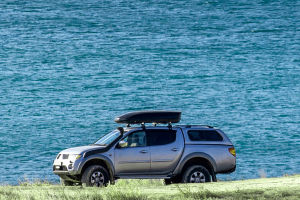SUV refers to a sport utility vehicle, which is a kind of car that combines off-road, sports, leisure, and business functions.
Usually, SUVs have high ground clearance and large-size tires and have better off-road performance and passability.
As a multi-purpose vehicle, SUVs have a very wide range of applications.
In the city, SUVs can meet the needs of daily commuting, but also cope with special road conditions and climate change, such as rain, snow, and muddy roads.
In the suburbs and rural areas, the off-road performance and passing performance of SUVs can bring better driving experience and safety assurance.
In long-distance travel and outdoor sports, the space and comfort performance of SUVs can also provide a better experience for the occupants.
In short, SUVs are an all-in-one type of vehicle that features good driving performance, off-road performance, and passing performance, with a wide range of applications.
In summary, the advantages and disadvantages of SUVs are as follows:
Advantages of SUVs
1. Large space: SUV models usually have a more spacious body, which can provide more space to ride, a more comfortable ride.
2. Off-road performance: SUV models are mostly equipped with four-wheel drive systems and high ground clearance, and can drive in complex road conditions, with better off-road performance.
3. Safety performance: SUV models have a sturdier body structure, with better collision protection and anti-rollover capabilities, and higher safety performance of the occupants.
4. Strong ability: SUV models are a more powerful power system and suspension system, can cope with a variety of road conditions and driving needs, driving ability.
5. Versatility: SUV models are not only suitable for urban driving but also able to cope with some special road conditions and climate change, such as rain and snow, and muddy roads, with a variety of functions.
Disadvantages of SUVs
1. Higher fuel consumption: SUVs are usually equipped with large engines, which have higher fuel consumption and higher costs of use.
2. Larger body: SUVs have a larger body, and larger turning radius, are less adaptable and are less suitable for urban driving.
3. Poor stability: due to the high body, SUV models will be relatively less stable, and prone to rollover and other dangers.
4. Higher price: SUV models have higher configuration and performance, and the price is usually higher, which is not suitable for consumers with lower budgets.
5. Poor environmental protection: SUVs usually use large engines, which have higher emissions and poor environmental performance.
In summary, SUV models have more advantages and disadvantages, consumers should make a choice when choosing to buy according to their needs and budget.


